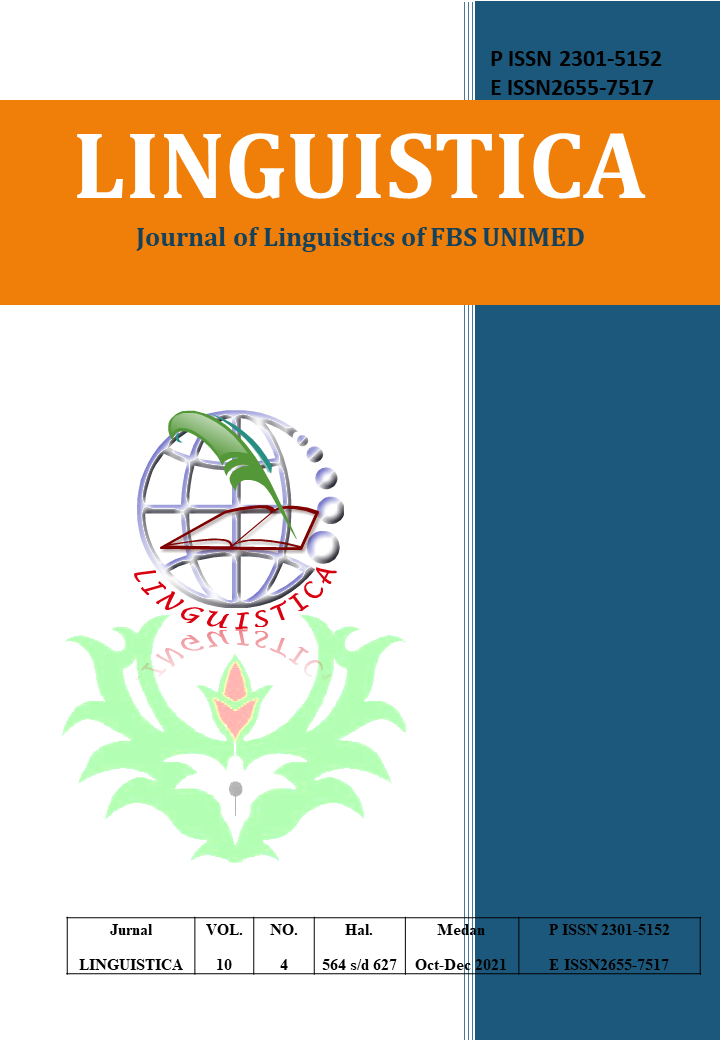TRANSLATION METHOD USED IN DELI MALAY AND SERDANG MALAY FOLKLORES FROM INDONESIAN TO ENGLISH
DOI:
https://doi.org/10.24114/jalu.v10i4.31285Abstract
This study aimed to determine the many types of translation methods, how they were employed in the translation of the folklores "Deli Malay" and "Serdang Malay" from Indonesian to English, and why the translators used the prevailing types in these folklores. The descriptive qualitative method was used to perform this research. The data was gathered from a folklore book and an interview with the folklores' translator. Descriptive qualitative research is the method used to analyze the data. The findings of this study revealed that literal translation accounted for 39 sentences (16%), faithful translation accounted for 23 sentences (9%), semantic translation accounted for four sentences (2%), adaptation translation accounted for seven sentences (3%), free translation accounted for 158 sentences (64%) and communicative translation accounted for 16 sentences (6%). A total of 247 sentences were extracted from the data. Because he did not follow any theories or methods of translation when translating the texts, the translator utilized free translation as the dominating method. Instead, he evaluated the translations' target audience, youngsters, and made them acceptable and simple to understand.Downloads
Published
2023-04-08
How to Cite
RESTIKA, R., SIREGAR, M., & SINAGA, L. S. M. (2023). TRANSLATION METHOD USED IN DELI MALAY AND SERDANG MALAY FOLKLORES FROM INDONESIAN TO ENGLISH. LINGUISTICA, 10(4), 594–606. https://doi.org/10.24114/jalu.v10i4.31285
Issue
Section
Articles
License
Copyright (c) 2021 RIA RESTIKA, MASITOWARNI SIREGAR, LIDIMAN SAHAT M SINAGA

This work is licensed under a Creative Commons Attribution-ShareAlike 4.0 International License.
Authors who publish with this journal agree to the following terms:
- Authors retain copyright and grant the journal the right of first publication with the work simultaneously licensed under a Creative Commons Attribution License that allows others to share the work with an acknowledgment of the work's authorship and initial publication in this journal.
- Authors are able to enter into separate, additional contractual arrangements for the non-exclusive distribution of the journal's published version of the work (e.g., post it to an institutional repository or publish it in a book), with an acknowledgment of its initial publication in this journal.
- Authors are permitted and encouraged to post their work online (e.g., in institutional repositories or on their website) prior to and during the submission process, as it can lead to productive exchanges, as well as earlier and greater citation of published work (See The Effect of Open Access).
- This work is licensed under a Creative Commons Attribution-ShareAlike 4.0 International License.









